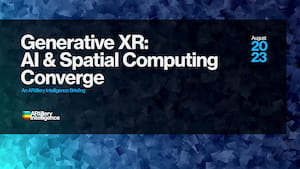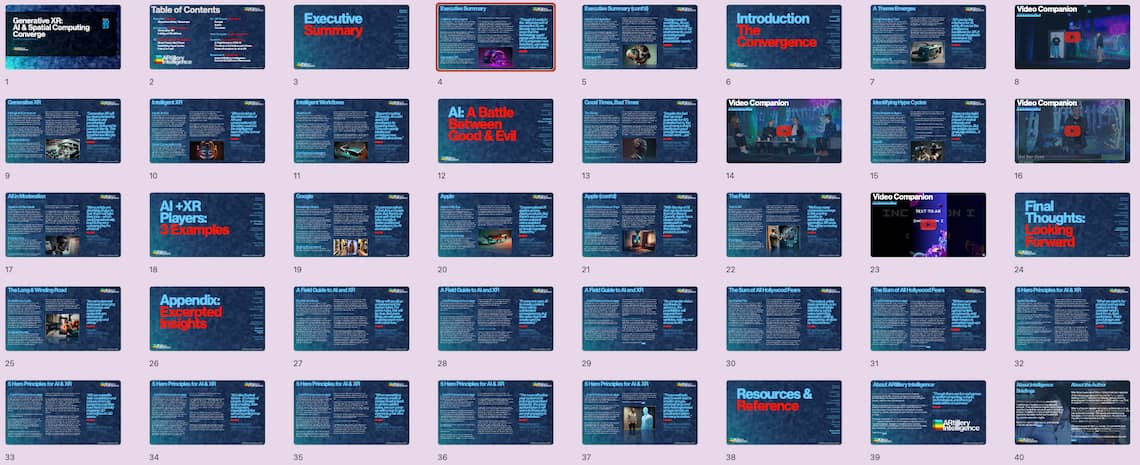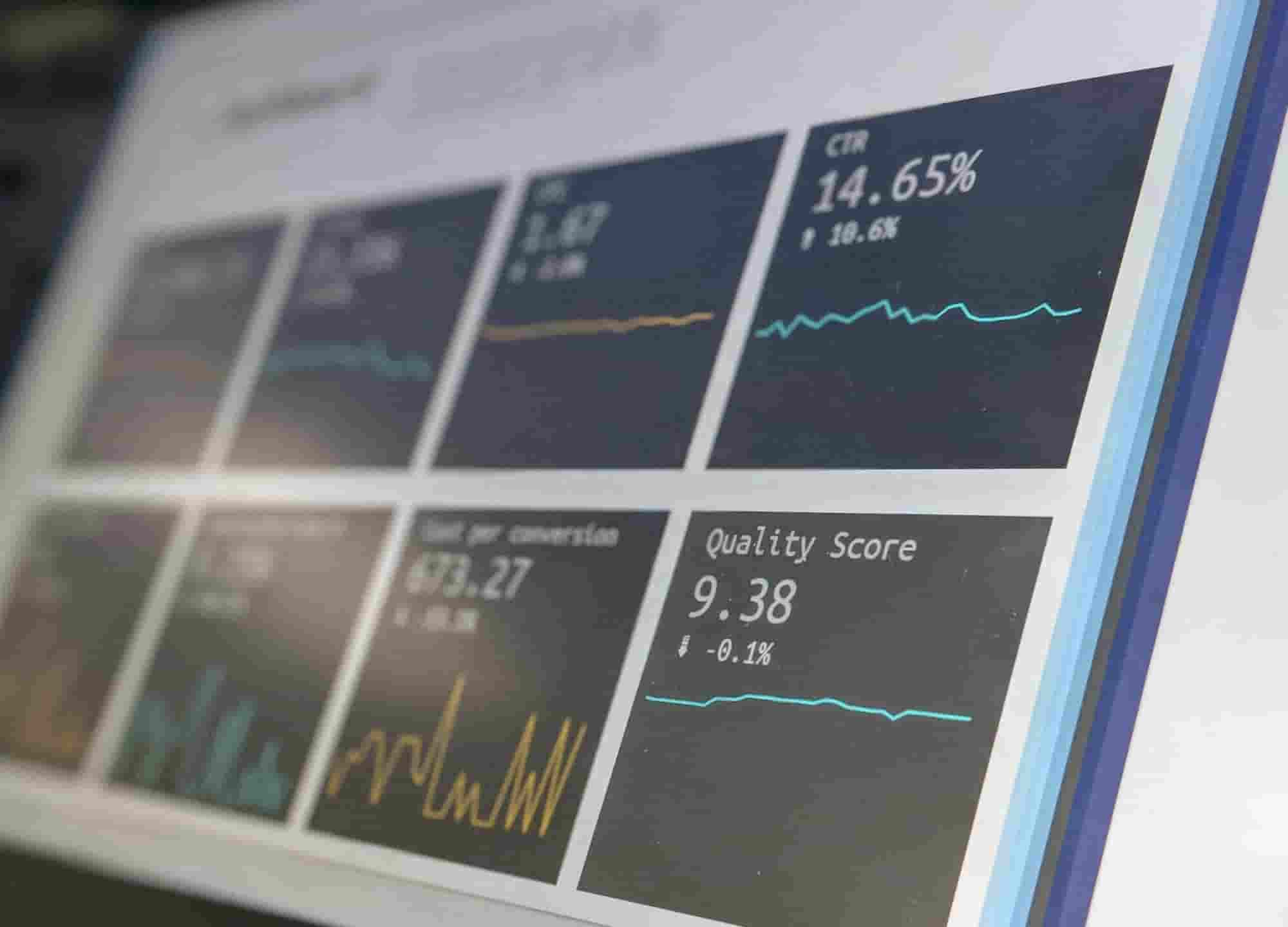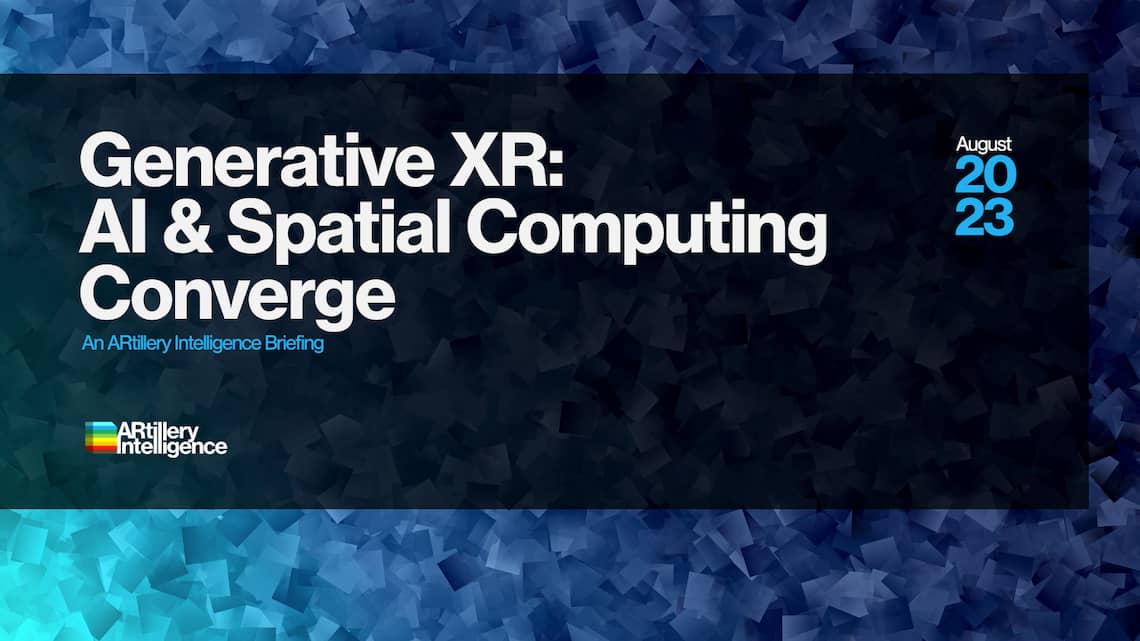
AI is the new black… especially generative AI such as DALL-E 2 and Midjourney. Generating artwork on the fly with text inputs seems to be blowing everyone’s minds. Similarly, conversational AI like ChatGPT continues to preview the future of information retrieval.
Some have even called this the death of the Google-dominant era of search. Though that could be overblown, there’s ample promise in the applications and endpoints for technology from the likes of OpenAI. This competitive landscape will explode in the coming years with several more players.
Amidst all that excitement, one question we’re often asked is how generative AI will converge with XR. And though it’s early in the conceptualization of generative AI, we already see several ways that the technology could merge with AR and VR to engender new functions, use cases, and points of value.
These possibilities are split between user-facing and creator-facing features. Starting with the former, generative AI could be used to create serendipitous AR experiences on the fly, based on voice prompts.
This contrasts the ways that AR and VR are experienced today which is mostly preordained. AR experiences and interactions are deliberately and painstakingly developed in advance, then experienced when activated in deliberate use cases. AI-generated XR – let’s call it “generative XR” – could be more open and flexible in creating experiences dynamically.
Similarly, with the help of generative AI, AR could evolve into more of a utility. Like search, information could be pull-based. Users could activate and observe 3D animations on demand, with possibilities from entertainment to “how-to” content (e.g., tying a tie).
As for creator-facing features, generative AI could accelerate developer workflows. This includes generating 3D models that are the ingredients for XR. Such outcomes would fill a key gap in XR’s value chain as 3D content is currently a bottleneck.
Think of this sort of like a creative assistant. During creative workflows, AI can be utilized to build rote elements of 3D environments, such as backgrounds or placeholder assets. This is similar to Meta’s concept of a ”builder bot” for 3D worlds, which doesn’t yet exist but could be a model or target.
Beyond AI’s role as a creative assistant, some AR creators are already using it as an inspirational tool. As part of their ideation process, they can prototype or storyboard AR lenses by generating artwork through tools like Midjourney. This can help them refine ideas or spark new creative directions.
Of course, the above just outlines a few ways that AI converges with XR. Other possible avenues include utilizing conversational AI (e.g., ChatGPT) for intelligent assistant functions in AR & VR headsets. Indeed, inputs that control these devices are still being conceived, so it could be an opportune time for intelligent voice assistants to emerge. These would require more capability than currently offered by Siri.
But all the above is admittedly early and speculative. Watching the convergence of AI and XR will be the fun part, which will take years to fully materialize. As we’ve learned from past tech cycles, the use cases and endpoints are discovered organically… and slowly. That said, it’s never too early to start to map out potential outcomes and opportunities. To identify and mine these opportunity gaps, the name of the game, as always, will be to maintain a knowledge edge.



The fastest and most cost-efficient way to get access to this report is by subscribing to ARtillery PRO. You can also purchase it a la carte.
This report highlights ARtillery Intelligence viewpoints, gathered from its daily in-depth market coverage. To support narratives, data are cited throughout the report. These include ARtillery Intelligence’s original data, as well as that of third parties. Sources are linked or attributed in each case.
For market sizing and forecasting, ARtillery Intelligence follows disciplined best practices, developed and reinforced through its principles’ 17 years in tech-sector research and intelligence. This includes the past 7 years covering AR & VR exclusively, as seen in research reports and daily reporting.
This approach primarily applies a bottom-up forecasting analysis, secondarily vetted against a top-down analysis. Together, confidence is achieved through triangulating figures in a disciplined way. More about our methodology can be seen here, and market-sizing credentials can be seen here.



Unless specified in its stock ownership disclosures, ARtillery Intelligence has no financial stake in the companies mentioned in its reports. The production of this report likewise wasn’t commissioned. With all market sizing, ARtillery Intelligence remains independent of players and practitioners in the sectors it covers, thus mitigating bias in industry revenue calculations and projections. ARtillery Intelligence’s disclosures, stock ownership, and ethics policy can be seen in full here.
Checkout easily and securely.
Ask us anything









